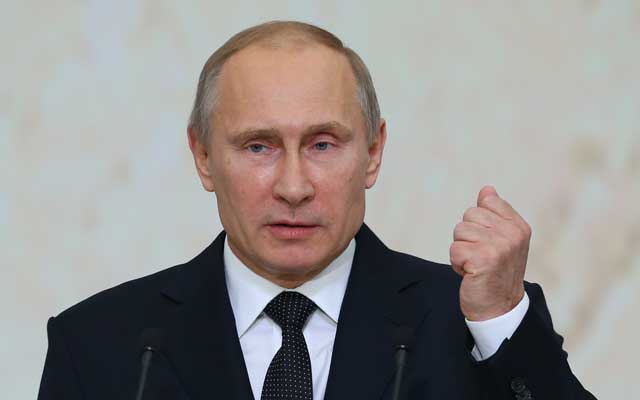 The chief of the North Atlantic Treaty Organization said that he hadn’t observed a reduction in the Russian troops massed near Ukraine, despite the announcement of a withdrawal by Russian President Vladimir Putin.
The chief of the North Atlantic Treaty Organization said that he hadn’t observed a reduction in the Russian troops massed near Ukraine, despite the announcement of a withdrawal by Russian President Vladimir Putin.
“Unfortunately, I have to say that we haven’t seen any evidence at all that the Russians have started withdrawal of troops from the Ukrainian border,” NATO Secretary-General Anders Fogh Rasmussen told reporters in Brussels.
The Kremlin said earlier that Mr Putin had ordered troops involved in military exercises near Ukraine to return to their bases.
Mr Rasmussen appeared sceptical about Moscow’s declaration. “I think it’s the third Putin statement on withdrawal of Russian troops, but so far we haven’t seen any withdrawal at all,” Mr Rasmussen said. “I strongly regret that, because a withdrawal of Russian troops would be a first important contribution to de-escalating the crisis.”
His comments were part of a press conference focusing largely on NATO’s response to Russian aggressiveness. Mr Putin has made a series of comments recently that some in the West interpret as conciliatory, but Mr Rasmussen reiterated his previous statements that Russia’s actions dramatically threaten European security.
He also joined a growing group of Western leaders who see Ukraine’s May 25 presidential election as a pivotal event, potentially the best opportunity to begin resolving the standoff.
“This is the vote that counts, for Ukraine and for the international community,” Mr Rasmussen said, an allusion to recent referendums in eastern Ukraine in support of joining Russia and that the West dismisses as illegitimate.
“Any effort to delay or disrupt the elections would be an attempt to deny the Ukrainian people their choice, and a further step back for efforts to find a general political solution to the crisis,” Mr Rasmussen said.
NATO has recently taken a range of steps intended to shore up its eastern flank, ranging from increasing air policing over the Baltic states to beefing up its naval presence in the Baltic and Black seas.
About 6,000 NATO troops are participating in Operation Steadfast Javelin in Estonia, an exercise designed to test the Alliance’s ability to repel an attack against one of its members. The exercise was planned before Russia’s move against Crimea, but has taken on added importance since.
NATO has also sent a small team of civilians to Ukraine to help bolster security around civilian nuclear plants.
Some countries, including Poland, have been pushing for NATO to shift ground forces, temporarily or permanently, into its eastern members. Mr Rasmussen suggested the decision will be made at a NATO summit in Wales in early September.
European diplomats are closely watching to see whether Russia begins imposing pressure on other countries in the region as it has on Ukraine, especially as they seek to strengthen their ties with Western Europe. Georgia and Moldova in particular are scheduled to sign “association agreements” with the European Union on June 27, that would tighten their political and economic ties to the bloc.
Ukraine’s steps towards a similar kind of deal with the EU last year prompted Moscow to ratchet up economic pressure against the country. When former Ukrainian President Viktor Yanukovych announced he was abandoning the deal, it provoked weeks of demonstrations and ultimately Mr Yanukovych’s ouster.
Mr Rasmussen warned that Russia could try similar techniques, such as higher gas prices, against the two former Soviet states.
“It is my assessment that we will see the same as Moldova and Georgia are going to finalise these agreements with the European Union,” Mr Rasmussen said.








